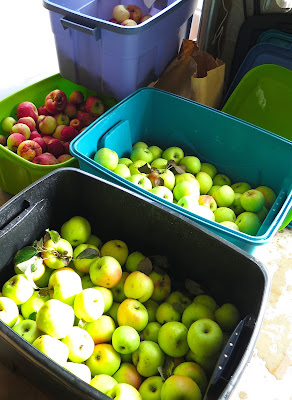 No matter how we celebrate Thanksgiving Day this year, teaching children to give thanks and be grateful is a critical part of developing a good, kind, and loving person. Thanksgiving is a perfect time for families to spend more discussion time together that builds knowledge, vocabulary and binds the family together. Creating a Thanksgiving book together is a gift in itself. You’ll need several sheets of paper or large paper plates, pencils, crayons, and stapler. Optional are paper punch and yarn.
No matter how we celebrate Thanksgiving Day this year, teaching children to give thanks and be grateful is a critical part of developing a good, kind, and loving person. Thanksgiving is a perfect time for families to spend more discussion time together that builds knowledge, vocabulary and binds the family together. Creating a Thanksgiving book together is a gift in itself. You’ll need several sheets of paper or large paper plates, pencils, crayons, and stapler. Optional are paper punch and yarn.
Conversation and Creating
Start by having a conversation with your children about things that both of you are thankful for. Keep it simple! After a few suggestions, sit together and begin to print an “I Am Thankful For… book. Depending on the age of the children, the book can either be dictated or printed by the children. Children just beginning to print can tell you the words. You can carefully print them on paper, and they can copy the proper spelling and letter formation. Keeping with the Thanksgiving theme, help your child trace their handprint to make a turkey outline on a few sheets of paper or plates. The thumb curves away from the fingers to make a head. This is a good time to talk about the makeup of turkeys with very young children. Turkeys have two wings and legs. They have a flap of skin on their necks called a wattle. Since they have feathers, they are birds. Young children can print one word on each turkey that represents something to be thankful for. Some children will attempt sounds they know; others can write the whole word or short sentence while younger ones need to dictate the words to you. Then children can illustrate their book. After completing several pages, add a cover and assemble the book. Print the title, author, and illustrator’s name on the cover. Now you are ready to cuddle and share this book your children can read. Encourage other families to make their own books. Then on Thanksgiving Day find a way to share your love and gratitude. Americans are an inventive creative people. We always find a way or way around.
How does this help your children? Writing involves creative thinking. Forming letters correctly, tracing and coloring all help develop fine motor skills. This also models the idea that writing has a purpose and showing gratitude is a wonderful social skill. A good book for a read aloud is “I’m Thankful Each Day” by P.K. Hallinan. Use this idea to write books throughout the year about the changing seasons, holidays, science learning, our great country, and our love for each other. They also make precious gifts for grandparents who are far away.
More Ideas and Activities....See the authors’ book “Learning Through the Seasons” at area bookstores and grandparentsteachtoo.org. For more help to prepare young children for success in school see the authors’ web site: www.grandparentsteachtoo.org. Also check our audio Podcasts WNMU Radio 90; Youtube video activities; and join us on Pinterest
Photos, Fran Darling, fdarling fotos






